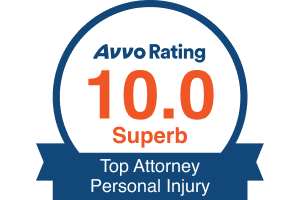Rules of Road for Pedestrians vs. Vehicles: Statutory and Case Law Considerations
Each state has extensive rules of the road statutes which govern the conduct of both the driver as well as the pedestrian. When an attorney first evaluates whether or not to accept a pedestrian accident case, he or she should consult the rules of the road statutes in his or her state to determine whether or not there have been any violations by either party. It is important to note that in the event there has been a violation of the rules of the road statutes, then the party violating those rules can be held to be negligent per se. Ga. Automobile Insurance Law, Uniform Rules of the Road: General Considerations; (a) violation of uniform rules of the road constitutes negligence per se, Sect 50:1, (2015-2016 ed.). It is important to look not only at the driver’s conduct with respect to the statutes, but also the pedestrian’s.
With respect to the pedestrian, the majority of states have statutes which require pedestrians to abide by traffic control devices and traffic regulations. See O.C.G.A § 40-6-90 (Georgia Statute). Likewise, most states have statutes which govern the conduct of both the pedestrian and the driver with respect to the right of way in crosswalks. The driver of the vehicle must stop and remain stopped to allow a pedestrian to cross the roadway within a crosswalk, whenever a pedestrian is on the half of the roadway in which the driver is traveling, or when the pedestrian is approaching and generally within one lane of the half of the roadway on which the driver is traveling. O.C.G.A § 40-6-91, pedestrian’s right of way in crosswalks. (Georgia Statute). However, such statutes generally prohibit a pedestrian from suddenly leaving the curb or place of safety and entering into the path of moving vehicle. Id. Accordingly, the statutory considerations require a balance between the driver’s obligation to yield to a pedestrian in a crosswalk and the pedestrian’s obligation to appropriately use the crosswalk when vehicles are approaching.
Under the laws of most states, if a pedestrian has chosen to cross at a place other than where a crosswalk is located, he or she must yield the right of way to the driver. O.C.G.A § 40-6-92, crossing at other than crosswalks. (Georgia Statute). However, once a pedestrian has entered the roadway and did so when it was safe, then the right of way belongs to the pedestrian and a driver must yield. Id. There are certain exceptions to the right of way rules arising out of a pedestrian crossing a roadway at other than a crosswalk. For instance, if a pedestrian tunnel or overhead pedestrian crossing is available to the pedestrian and the pedestrian chooses to cross the roadway in any event, then he is under a complete duty to yield the right of way to all vehicles on the roadway. See O.C.G.A § 40-6-92 (Georgia Statute).
It is important to note that if a pedestrian is at intersections, which are controlled by traffic control signals, most states generally prohibit the pedestrian from crossing except in a marked crosswalk. Id. As discussed previously, whenever a pedestrian is not utilizing an available crosswalk, this is a substantial red flag for ever pursuing this type of case.
While the statutory scheme that has been established does create duties on the pedestrian, states generally put the ultimate duty on the driver of the vehicle to exercise due care to avoid colliding with any pedestrian who is on the roadway. O.C.G.A § 40-6-93, Drivers to exercise due care. (Georgia Statute). The underlying policy to ultimately place the duty on the driver to avoid impacting a pedestrian is due to the substantial likelihood of injury or death to the pedestrian should a collision with a car occur.
Drivers are often under an obligation to sound their horn when necessary and are under a duty to exercise proper precautions when observing any child or person who may be confused, incapacitated or intoxicated, who is in the roadway. Simply put, the normal rules do not apply when you have a person of limited capacity and that person’s limited capacity is apparent to the driver. O.C.G.A § 40-6-93 (Georgia Statute). Likewise, a driver must always yield the other right of way to a blind pedestrian, without regard to their location. O.C.G.A § 40-6-94 (Georgia Statute).
Special rules often apply to pedestrians who are on highways. Generally, a pedestrian must utilize the sidewalk, whether on the highway or other roadway, if it is available. If a sidewalk is not available, then the pedestrian is required to utilize the shoulder of the road. Finally, in the event there is no shoulder of the road, then the pedestrian is required to walk as near as practical to the outside edge of the roadway and should only walk on the left side of the roadway against traffic. O.C.G.A § 40-6-96 (Georgia Statute). Of course, this improves the pedestrian’s ability to avoid a collision with the vehicle and makes the pedestrian more visible to any vehicle on the roadway.
It is extremely important for an attorney to fully analyze and investigate the interpretation of any and all applicable statutes and factual circumstances involving a pedestrian collision. Very often, the appellate courts of your state will have encountered cases of the same or similar nature as the one which you are litigating. It has been the tendency of the appellate courts to give great deference to pedestrians involved in a collision and, in any event, to require a jury to determine the relative fault between a driver and a pedestrian. The cases are so supportive of the pedestrian that there have even been circumstances in which a pedestrian has been found lying down in the roadway and intoxicated, in which the appellate court has held that a jury can find that a driver was negligent for failing to identify the presence of the pedestrian and to avoid him or her when operating their vehicle. Fountain v. Thompson, 252 Ga. 256, 312 Se.2d 788 (1984) (driver may be held liable for hitting intoxicated person lying in roadway). Very often cases involving pedestrians accidents can provide excellent sources for jury charges that can provide a significant advantage to a pedestrian involved in a collision.







